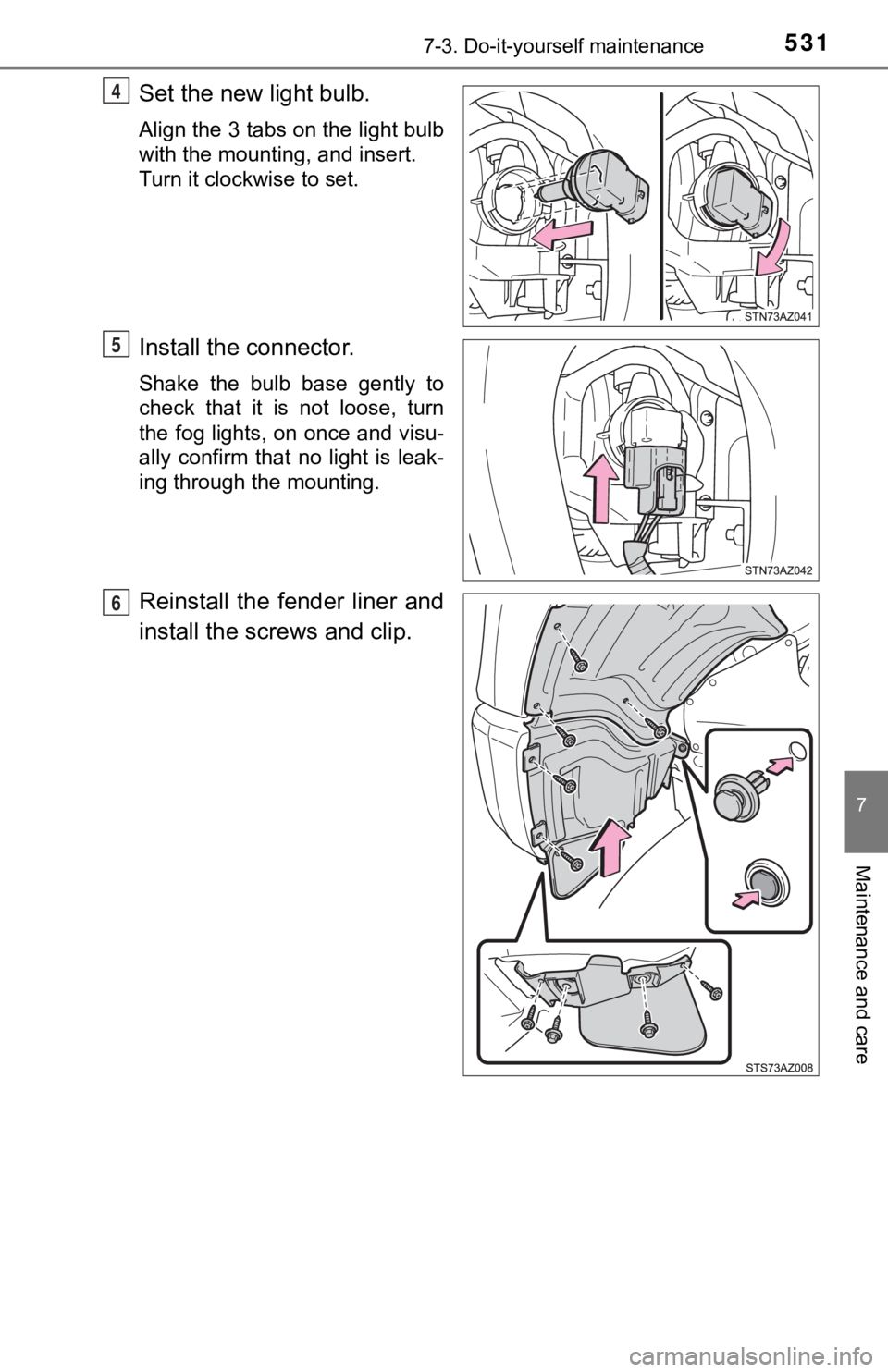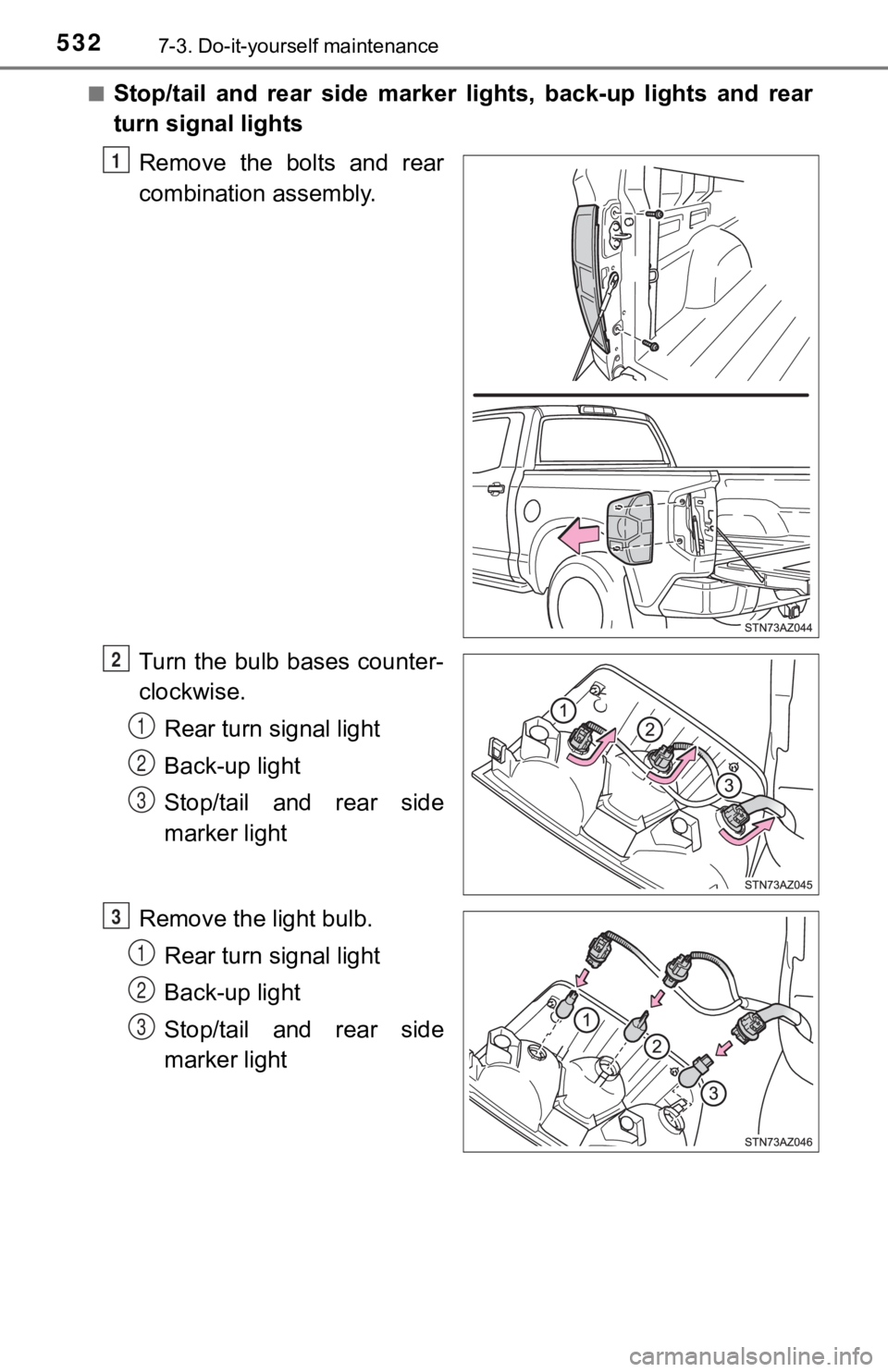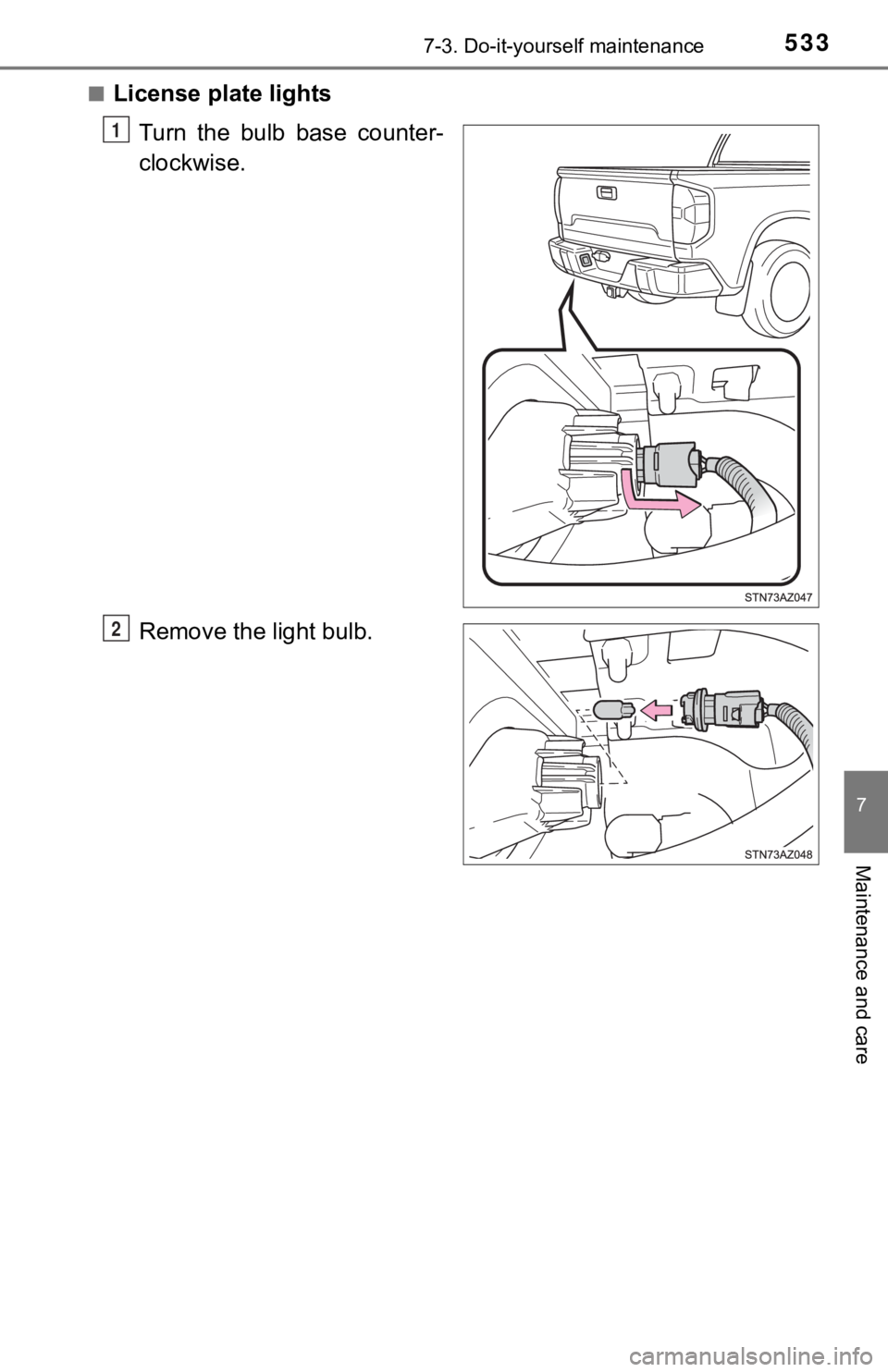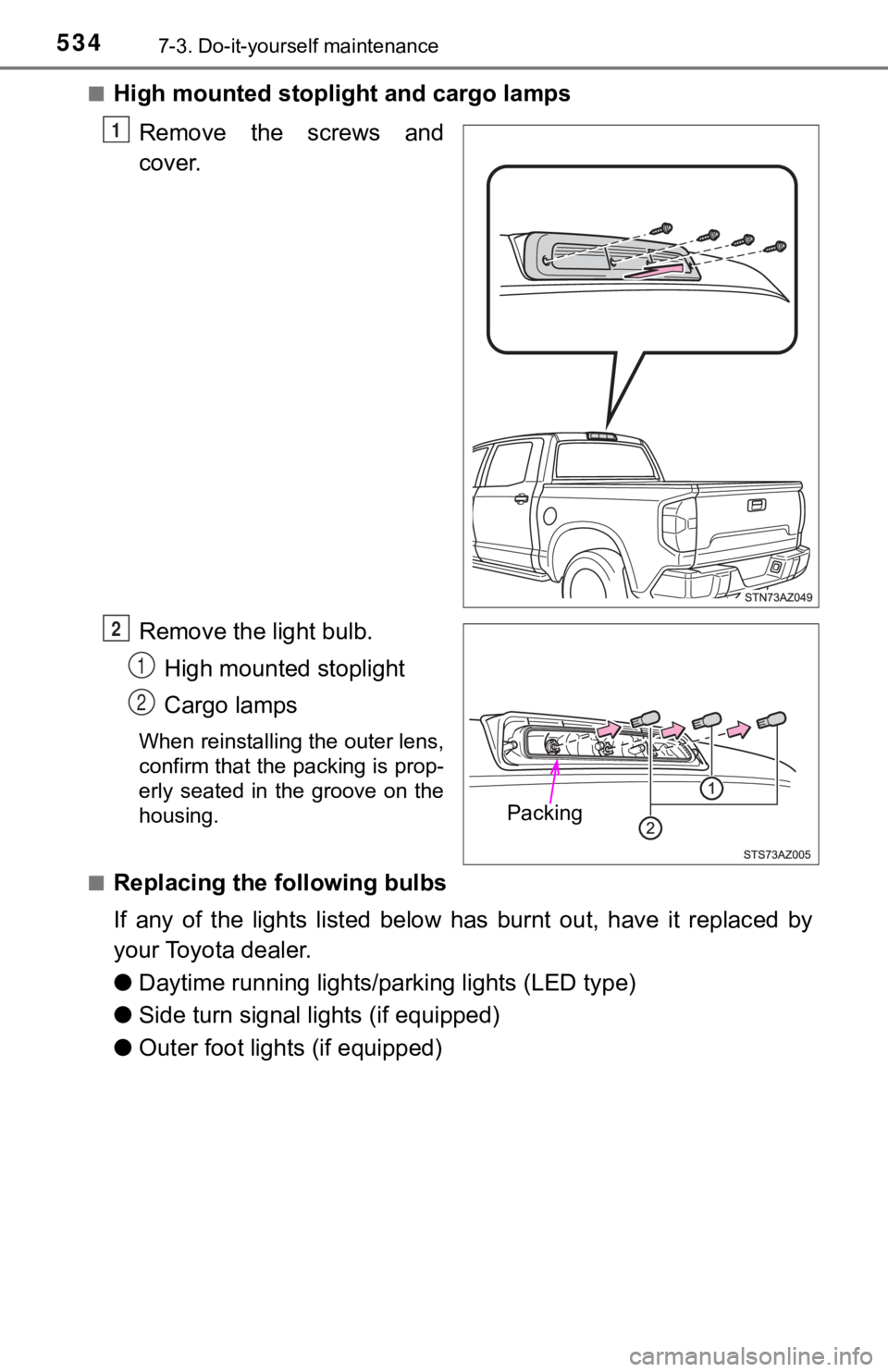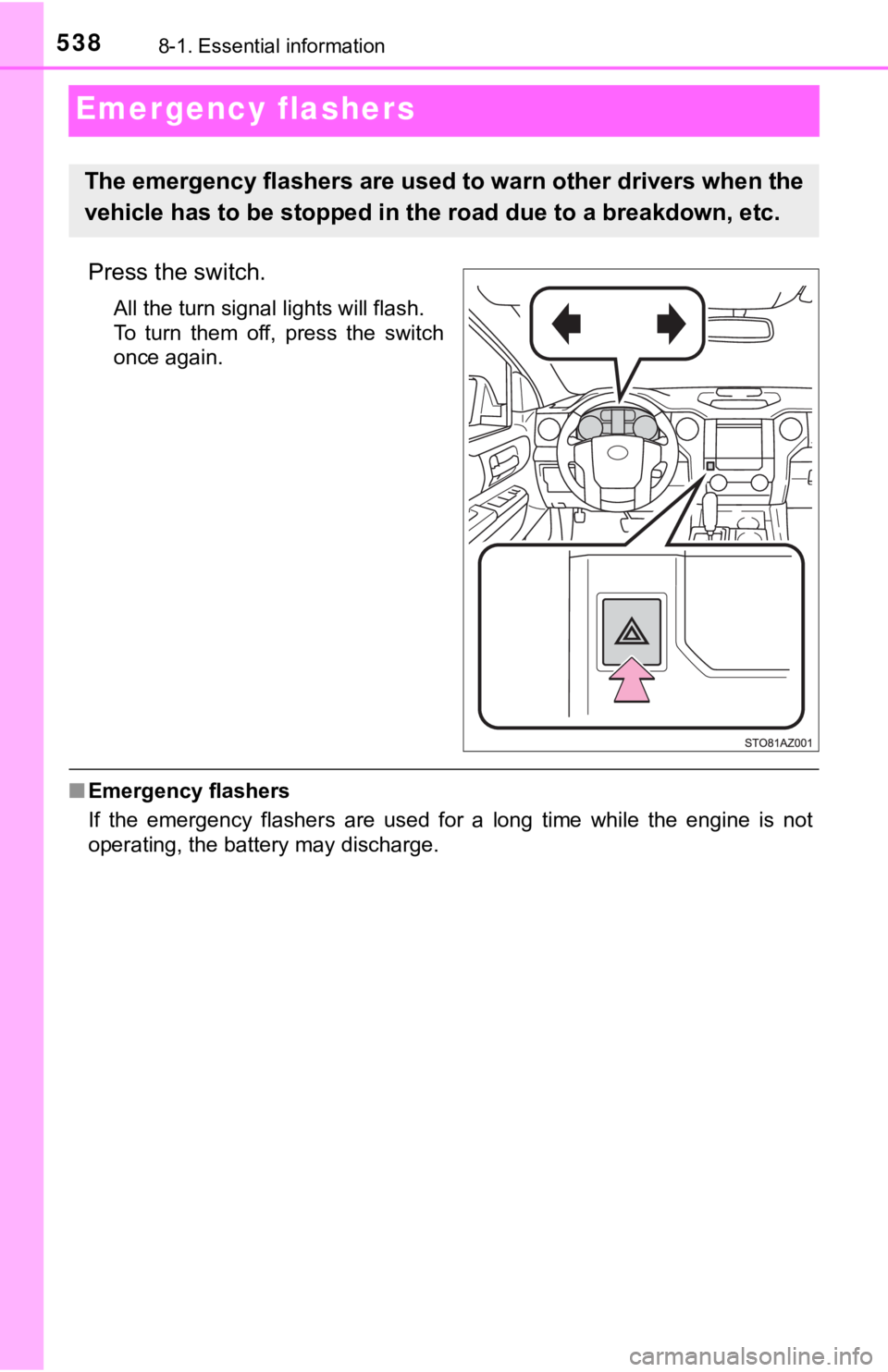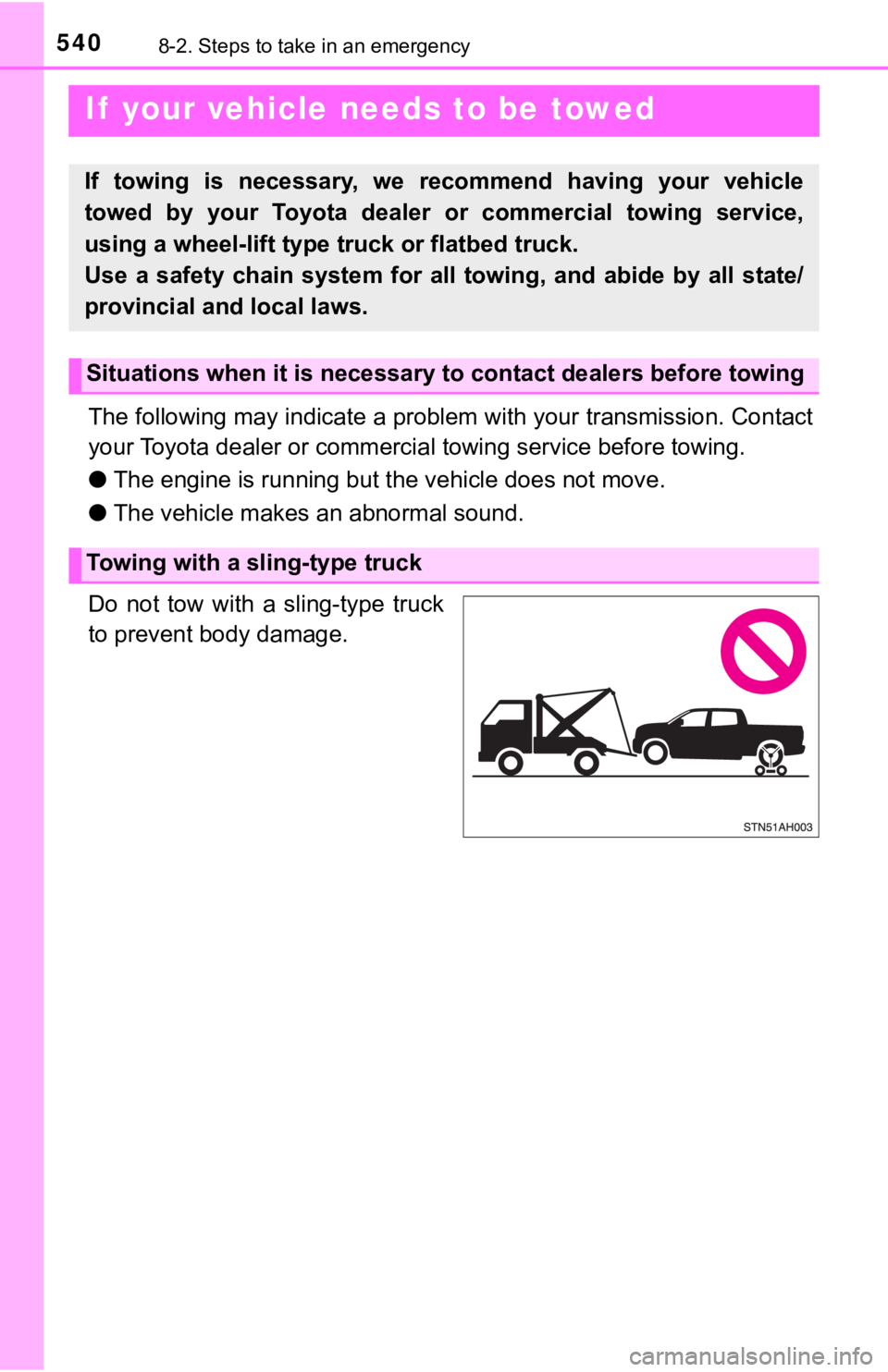TOYOTA TUNDRA 2018 Owners Manual (in English)
TUNDRA 2018
TOYOTA
TOYOTA
https://www.carmanualsonline.info/img/14/43029/w960_43029-0.png
TOYOTA TUNDRA 2018 Owners Manual (in English)
Trending: compression ratio, parking sensors, deactivate passenger airbag, manual transmission, child seat, airbag off, Check engine light
Page 531 of 672
5317-3. Do-it-yourself maintenance
7
Maintenance and care
Set the new light bulb.
Align the 3 tabs on the light bulb
with the mounting, and insert.
Turn it clockwise to set.
Install the connector.
Shake the bulb base gently to
check that it is not loose, turn
the fog lights, on once and visu-
ally confirm that no light is leak-
ing through the mounting.
Reinstall the fender liner and
install the screws and clip.
4
5
6
Page 532 of 672
5327-3. Do-it-yourself maintenance
■Stop/tail and rear side marker lights, back-up lights and rear
turn signal lightsRemove the bolts and rear
combination assembly.
Turn the bulb bases counter-
clockwise.Rear turn signal light
Back-up light
Stop/tail and rear side
marker light
Remove the light bulb. Rear turn signal light
Back-up light
Stop/tail and rear side
marker light
1
2
1
2
3
3
1
2
3
Page 533 of 672
5337-3. Do-it-yourself maintenance
7
Maintenance and care
■License plate lightsTurn the bulb base counter-
clockwise.
Remove the light bulb.
1
2
Page 534 of 672
5347-3. Do-it-yourself maintenance
■High mounted stoplight and cargo lamps
Remove the screws and
cover.
Remove the light bulb. High mounted stoplight
Cargo lamps
When reinstalling the outer lens,
confirm that the packing is prop-
erly seated in the groove on the
housing.
■
Replacing the following bulbs
If any of the lights listed below has burnt out, have it replac ed by
your Toyota dealer.
● Daytime running lights/ parking lights (LED type)
● Side turn signal lights (if equipped)
● Outer foot lights (if equipped)
1
Packing
O
1
2
Page 535 of 672
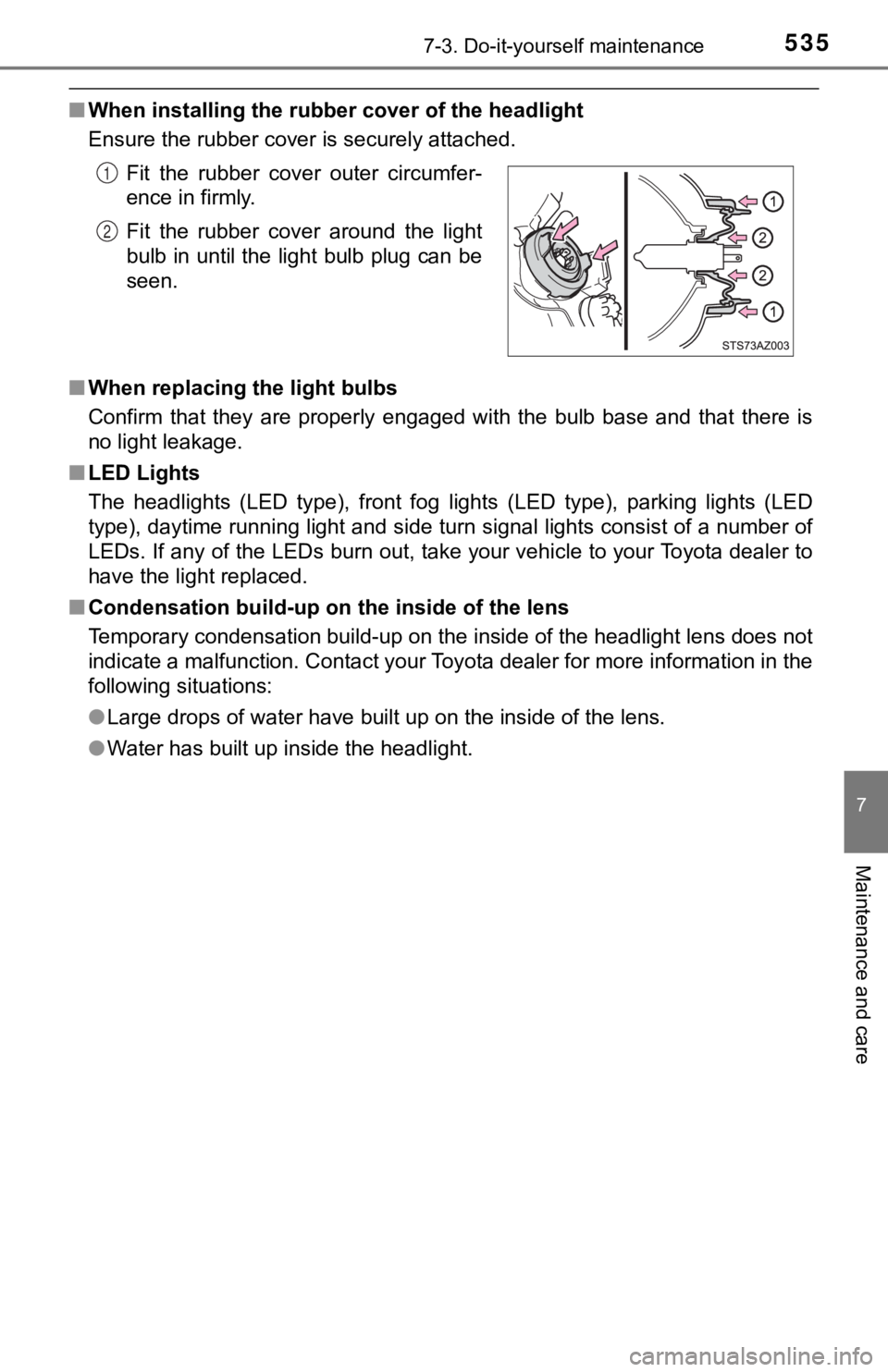
5357-3. Do-it-yourself maintenance
7
Maintenance and care
■When installing the rubber cover of the headlight
Ensure the rubber cover is securely attached.
■ When replacing the light bulbs
Confirm that they are properly engaged with the bulb base and that there is
no light leakage.
■ LED Lights
The headlights (LED type), front fog lights (LED type), parking lights (LED
type), daytime running light and side turn signal lights consis t of a number of
LEDs. If any of the LEDs burn out, take your vehicle to your To yota dealer to
have the light replaced.
■ Condensation build-up on the inside of the lens
Temporary condensation build-up on the inside of the headlight lens does not
indicate a malfunction. Contact your Toyota dealer for more information in the
following situations:
● Large drops of water have built up on the inside of the lens.
● Water has built up inside the headlight.Fit the rubber cover outer circumfer-
ence in firmly.
Fit the rubber cover around the light
bulb in until the light bulb plug can be
seen.
1
2
Page 536 of 672

5367-3. Do-it-yourself maintenance
WARNING
■Replacing light bulbs
● Turn off the lights. Do not attempt to replace the bulb immedia tely after
turning off the lights.
The bulbs become very hot and may cause burns.
● Do not touch the glass portion of the light bulb with bare hands. When it is
unavoidable to hold the glass portion, use and hold with a clea n dry cloth
to avoid getting moisture and oils on the bulb.
Also, if the bulb is scratched or dropped, it may blow out or crack.
● Fully install light bulbs and any parts used to secure them. Failure to do so
may result in heat damage, fire, or water entering the headligh t unit. This
may damage the lights or cause condensation to build up on the lens.
● Do not attempt to repair or disassemble the bulb, bulb base, el ectrical wir-
ing, or subcomponents.
Doing so could result in electric shock and serious injury.
■ To prevent damage or fire
● Make sure bulbs are fully seated and locked.
● Check the wattage of the bulb before installing to prevent heat damage.
Page 537 of 672
537
8When trouble arises
8-1. Essential informationEmergency flashers .......... 538
If your vehicle has to be stopped in
an emergency ................. 539 8-2. Steps to take in an emergency
If your vehicle needs to be towed ......................... 540
If you think something is wrong .............................. 545
Fuel pump shut off system ............................ 546
If a warning light turns on or a warning buzzer
sounds ............................ 547
If a warning message is displayed......................... 555
If you have a flat tire.......... 565
If the engine will not start ................................. 580
If the vehicle battery is discharged ...................... 582
If your vehicle overheats ... 585
If the vehicle becomes stuck ............................... 588
Page 538 of 672
5388-1. Essential information
Emergency flashers
Press the switch.
All the turn signal lights will flash.
To turn them off, press the switch
once again.
■Emergency flashers
If the emergency flashers are used for a long time while the en gine is not
operating, the battery may discharge.
The emergency flashers are used to warn other drivers when the
vehicle has to be stopped in the road due to a breakdown, etc.
Page 539 of 672
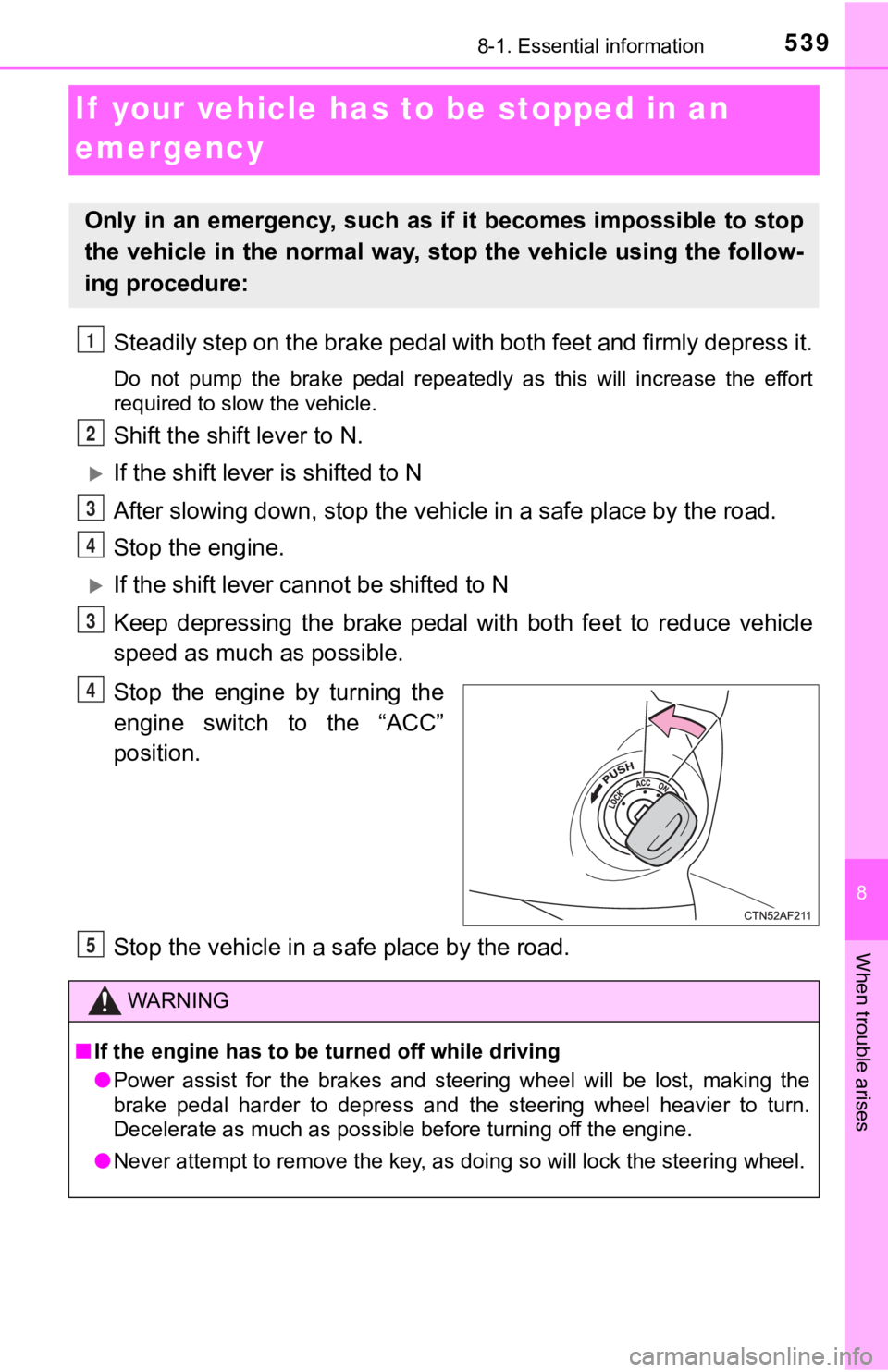
539
8
When trouble arises
8-1. Essential information
If your vehicle has to be stopped in an
emergency
Steadily step on the brake pedal with both feet and firmly depress it.
Do not pump the brake pedal repeatedly as this will increase th e effort
required to slow the vehicle.
Shift the shift lever to N.
If the shift lever is shifted to N
After slowing down, stop the vehi cle in a safe place by the road.
Stop the engine.
If the shift lever cann ot be shifted to N
Keep depressing the brake pedal with both feet to reduce vehicl e
speed as much as possible.
Stop the engine by turning the
engine switch to the “ACC”
position.
Stop the vehicle in a s afe place by the road.
Only in an emergency, such as if it becomes impossible to stop
the vehicle in the normal way, st op the vehicle using the follow-
ing procedure:
1
2
3
4
3
4
WARNING
■ If the engine has to be turned off while driving
● Power assist for the brakes and steering wheel will be lost, ma king the
brake pedal harder to depress and the steering wheel heavier to turn.
Decelerate as much as possible before turning off the engine.
● Never attempt to remove the key, as doing so will lock the stee ring wheel.
5
Page 540 of 672
5408-2. Steps to take in an emergency
If your vehicle needs to be towed
The following may indicate a problem with your transmission. Contact
your Toyota dealer or commercial towing service before towing.
● The engine is running but t he vehicle does not move.
● The vehicle makes an abnormal sound.
Do not tow with a sling-type truck
to prevent body damage.
If towing is necessary, we recommend having your vehicle
towed by your Toyota dealer o r commercial towing service,
using a wheel-lift type t ruck or flatbed truck.
Use a safety chain system for all towing, and abide by all stat e/
provincial and local laws.
Situations when it is necessary to contact dealers before towing
Towing with a sling-type truck
Trending: lumbar support, clock, instrument panel, brake, load capacity, power steering fluid, seat fuse
